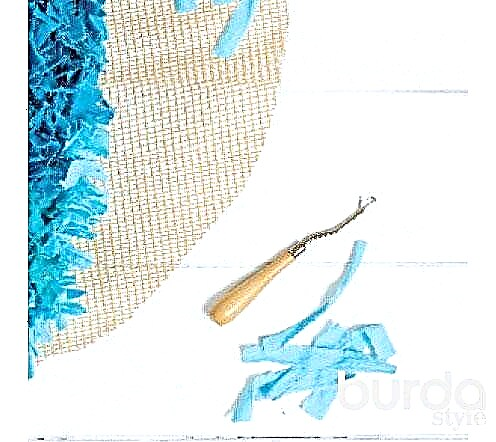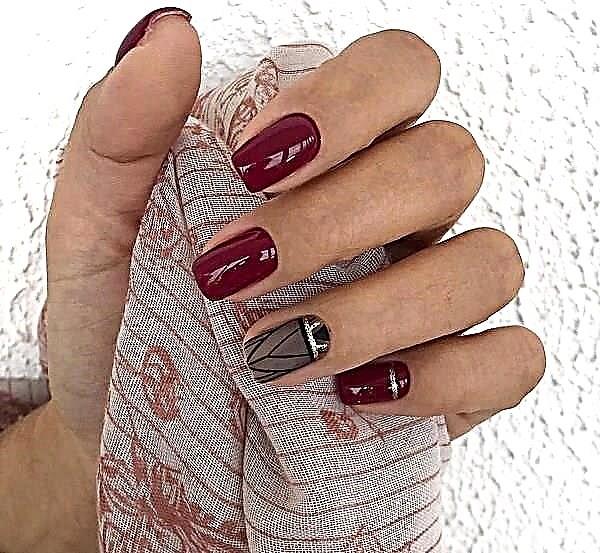Share
Pin
Tweet
Send
Share
Send
This time-tested and now popular technique allows you to roll from wool as toys and fashion accessories, as well as real works of art ...
Today we will make a funny picture using the technique of dry felting, but first we will give instructions for two different types of felting: dry and wet.
MATERIALS AND TOOLS
Clockwise bottom right: scissors for cutting the edges of the felt; roller with a bamboo mat for rolling out the semi-finished product; a towel to squeeze out excess moisture; film with pimples for a template or for twisting; a bowl for soap solution; mug for soap solution; stirring spoon; sprayer for soap solution; rubber bulb for spraying a soap solution; laundry soap; pins for drying felted wool; pencils for creating patterns; durable, waterproof litter; non-slip mat with a structural surface.

HOW TO ROLL BALLS
The longer you process the wool (no matter in what technique), the denser the flakes of wool yarn interlock. As a result, felted wool (felt) will become more compact. The photo shows the effect that gives the duration of felting: 1, 5, 10 and 15 minutes with dry felting from the same mass of wool.

SEPARATE A PIECE OF HAIR
Both with dry and wet felting, it is important to capture thin, but as wide as possible (up to 10 cm) pieces of fiber of wool yarn. To do this, press the index finger against the thumb and gently pull the shreds of wool.
WITH WET FELT
STEP 1
Lay a layer of wool yarn (so thick that the litter does not shine through it) to lay in one direction on the surface. Lay another layer on this layer, but in the opposite direction. This will speed up and facilitate the blending of wool fibers. Moisten wool yarn evenly with soapy water.
STEP 2
Squeeze out excess moisture and air bubbles. If necessary, do this with a cloth or towel.
STEP 3
For about 1 minute, beat the wool by hand, and then roll for several minutes. Continue to roll the resulting semifinished product until the fibers no longer separate during rolling. Rinse gently and allow to dry.


 WITH DRY FELT
WITH DRY FELT STEP 1
Woolen fibers in the hand roll into a certain shape.
STEP 2
The needle is repeatedly injected and removed from a given shape. Be careful: it is recommended for beginners not to hold the form in their hands, but to fix it on a thick litter.
STEP 3
Continue to stick and pull out the needle until your shape is firm enough. Faster things will go with a special holder for several needles.
STEP 4
To create a recess in the mold, especially work a lot with the needle in this place.




Attention:
Zoom the picture template (photo below) to the desired size.

INSTRUCTION FOR MAKING A PICTURE 6:
Cut a template out of cardboard or film with pimples. The size of this template should be one and a half times larger in length and width (taking into account shrinkage when felting).
COVER PATTERN WITH UNCREVENT WOOL
1. Place the template on a dry litter.
2. Take a strand of wool in your hand. With your other hand, carefully pluck out the same small bundles of fibers.
3. Bunches of wool fibers flat, close to each other in one row, lay on the template.
4. Lay the second row at an angle of 90 ° to the first. The pattern under the wool fibers should not be visible.
5. To ensure that the wool fibers are tightly intertwined with each other, cover the motif with at least two layers of wool. If the motif from the felt needs to be thicker, continue to lay tufts of wool in rows, each time turning them 90 °.
6.Finally, carefully, through the sprayer, moisten the coat with a hot soapy solution (about 1 tablespoon of liquid soap with olive oil in 1 liter of water). Do not wet too much so that the coat does not fall off too quickly. Press the wool to the litter.GRIND AND KNEAD
1. Cover the wool with a slightly larger plastic wrap than the motif.
2. Slowly, in a circle, rub the film with your palm. Make sure that the strands of wool do not budge.
3. The process of self-possession begins a few minutes later. Woolen fibers begin to adhere tightly to each other and non-spun wool is gradually compacted.
4. The stronger the felt part should be, the more it needs to be rubbed and kneaded. If possible, work from the periphery to the center so that the edges of the part are not torn.
5. If you have laid out a very thick layer of wool, occasionally turn the part over to the other side and start the process again.
WALLOW
After grinding and kneading, the felt still does not reach the required strength. But in the process of felting, wool fibers are intertwined very tightly, and the felt becomes dense and resistant to wear. In addition, directly in the process of felting parts, you can give the desired shape. Important: the felt shrinks in the direction in which it is rolled. If it does not matter how durable the felt is, the process of felting can be abandoned.
1. When the wool fibers are tightly intertwined, gently squeeze out excess moisture.
2. Place the part on a towel and moisten with a little hot water. Twist the towel and roll it lightly in different directions about 25 times on a bed with a structural surface.
3. Unfold the towel and stretch the part, giving it the desired shape. Turn over, moisten the felt again with hot water, twist and process as described above.
4. Unroll the towel again, stretch the part again, giving it the desired shape, and process again as described above. A piece of felt should be processed from all sides and in all directions. This means that for strength it needs to be rolled at least 200 times, constantly increasing pressure.
5. The felting process is completed when the part is no longer stretched in any direction.
6. Rinse the soap thoroughly. At the last rinse, add some acetic acid to the water.
7. Finally, stretch the felt part again, giving it the desired shape, and lay it to dry.
Photo: PR, burdastyle.ru archive.
Material prepared by Elena Karpova
Share
Pin
Tweet
Send
Share
Send



